USB Controller and NAND Flash Read Write Speed Study
After being in the business for more than a decade, we have finally decided to publish a Flash study. This will be an ongoing project so keep checking this page for updated reports. If you have anything to add or have any questions, put them in the comments or email sales@customusb.com.
Since we kick-started the customized USB industry eight years ago, a lot has changed. Pricing has significantly come down, market demand has increased and technology has improved. We now stock more drives than we sold when we first started. Throughout the years, we have seen many different types of drives come across our desk and have always tried to use the most reliable components. This is what we knew then. This is what we know now:
- Most NAND Flash is made by Samsung, Toshiba, Micron, Hynix, and Intel.
- The smallest capacity currently produced by the NAND Flash Manufacturers (listed above) is 8GB. All smaller capacities that you see on the market are made using downgraded Flash.
- Downgraded Flash is derived from higher capacity chips that have failed sectors. The bad sectors are partitioned off and the chip is used as the next smallest capacity. (e.g. an 8GB chip with failed sectors can be used as a 4GB, unless the failed sectors give the chip less usable space than 4GB. In that case, the chip would be used as 2GB or lower.)
- USB Controller is responsible for functionality of the USB drive. The combination of Controller chip and Flash chip (as well as other components) determine the quality of the USB drive.
- In the OEM market, the most popular Controllers are Alcor Micro, SMI (Silicon Motion), and Chipsbank.
For this study, we have tested several brand name USB drives from our partners as well as OEM drives that we either assemble ourselves or source from China. We use (or have used) all of these components on a customers’ budget and technical requirements.
We used CrystalDiskMark to measure sequential read/write speed using 50MB and 1GB (1000MB) test sizes. We also used Check Flash to test the drives for errors.
SanDisk
- SanDisk Flash and Controller
- 16GB USB 2.0 tested > 14.9GB of usable memory
- Read Speed: 21.66MB/s, Write Speed: 3.966MB

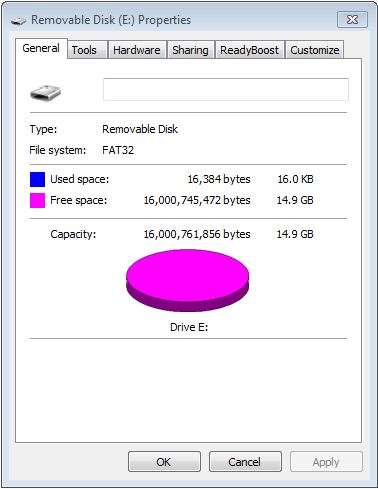
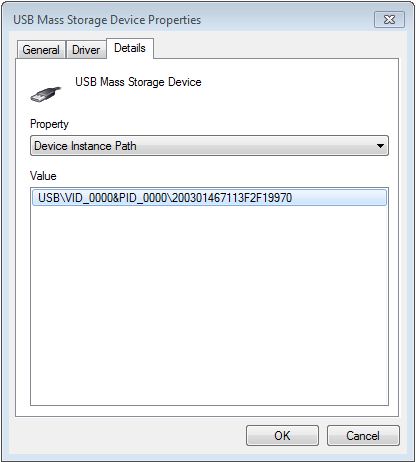
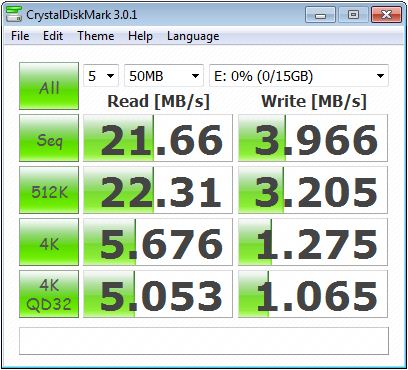
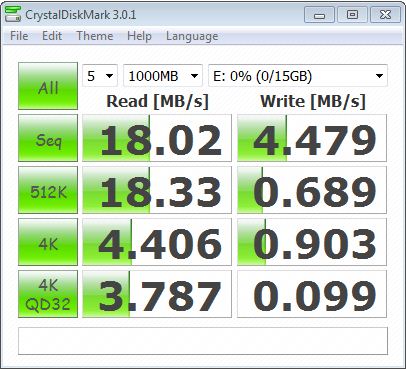
Kingston
- Toshiba Flash and TC58NC226166F Controller
- 8GB USB 2.0 tested > 7.24GB of usable memory
- Read Speed: 19.13MB/s, Write Speed: 9.473MB/s
- Controller VID 0930 and PID 6545
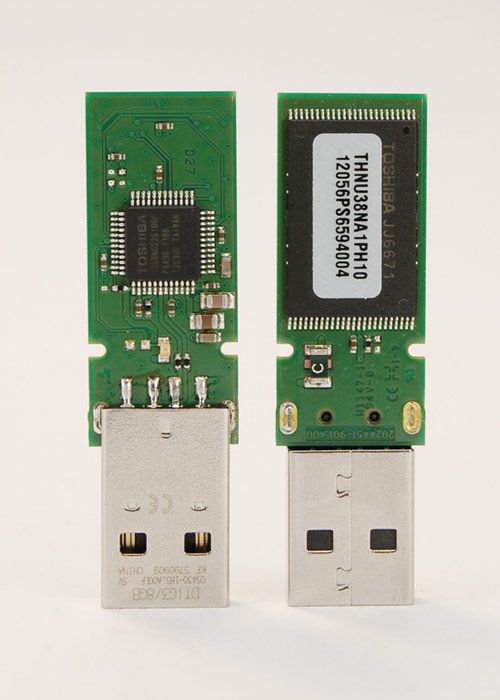
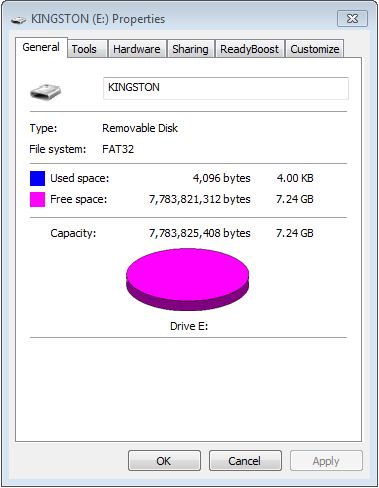
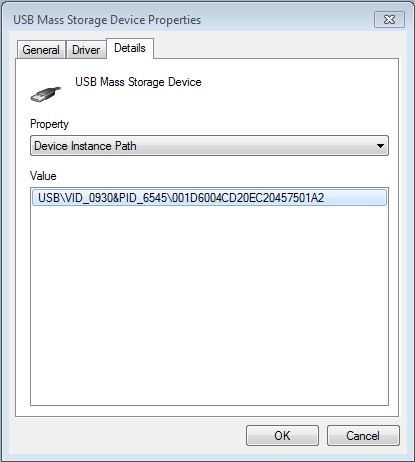
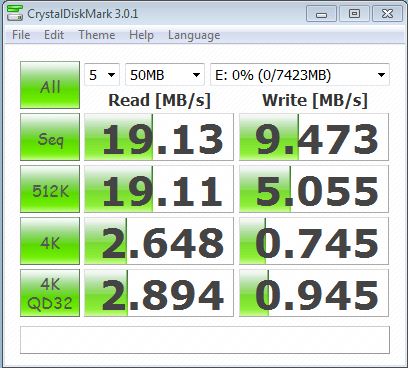
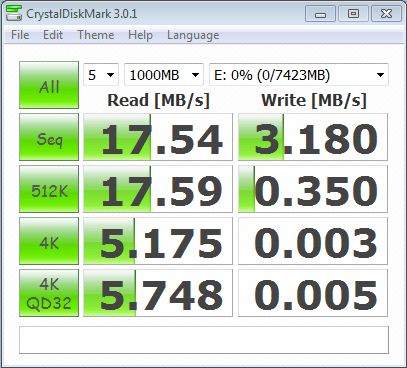
PNY
- Unidentified Flash, ITE IT1167BE Controller
- 4GB USB 2.0 tested > 3.75GB of usable memory
- Read Speed: 21.90MB/s, Write Speed: 7.046MB/s
- Controller VID 048D and PID 1168
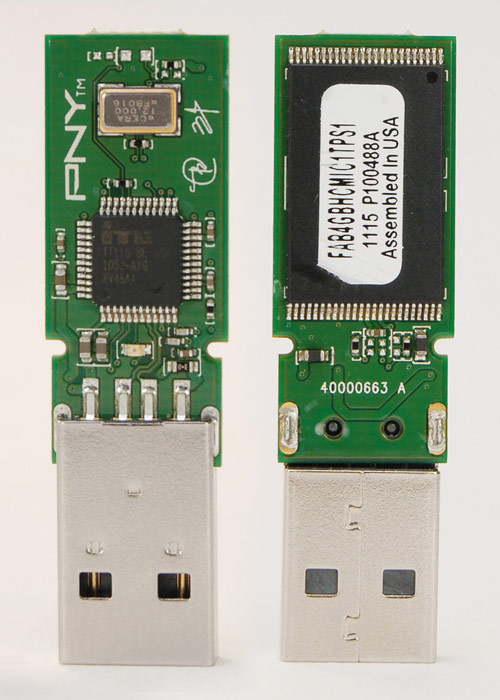
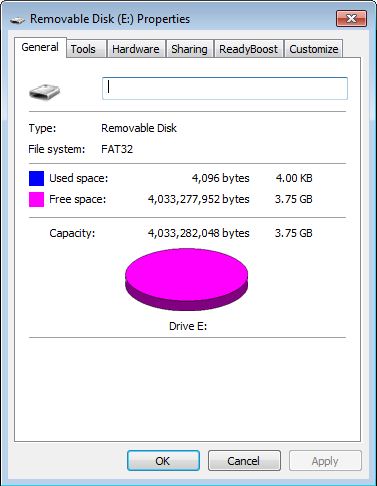
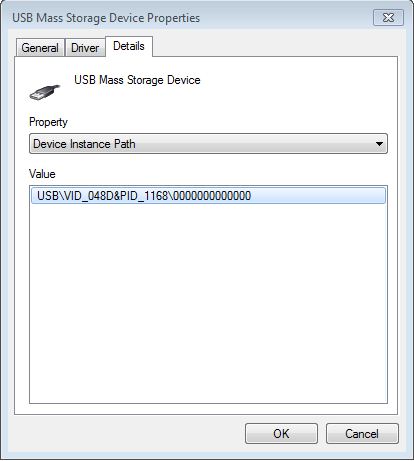
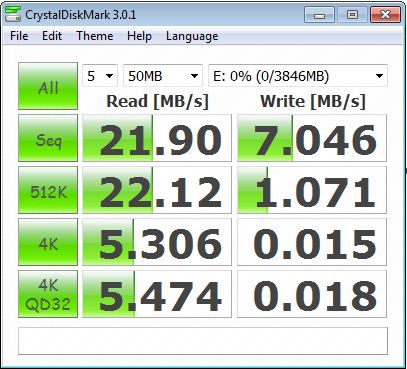
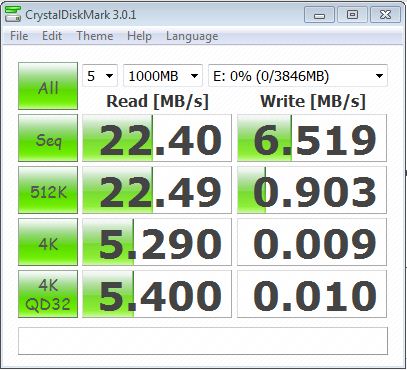
SuperTalent USB 3.0
- Micron Flash, Innostor IS902 Controller
- 8GB USB 3.0 tested > 37.17GB of usable memory
- Read Speed on USB 2.0 Port: 36.86MB/s, Write Speed on USB 2.0 Port: 13.24MB/s
- Controller VID 1B8F and PID 0902
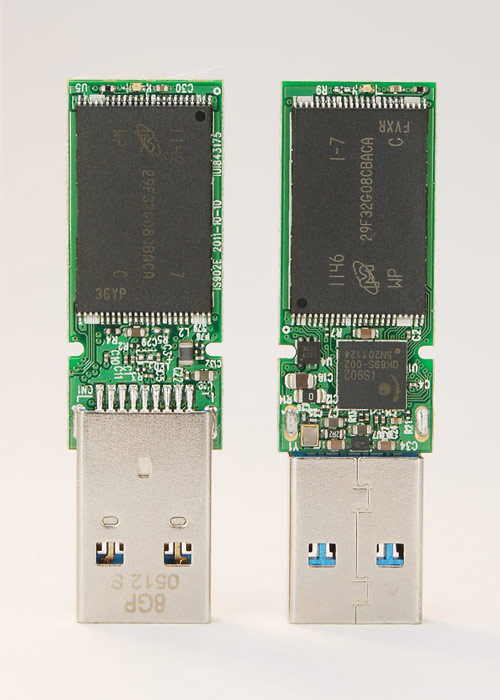
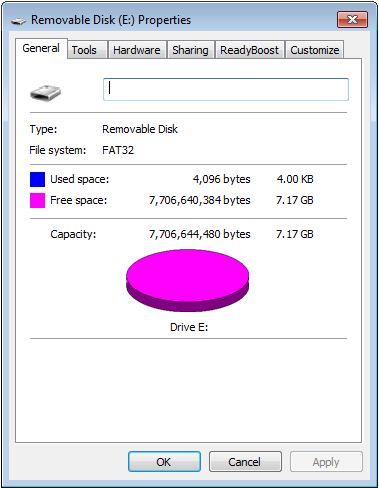
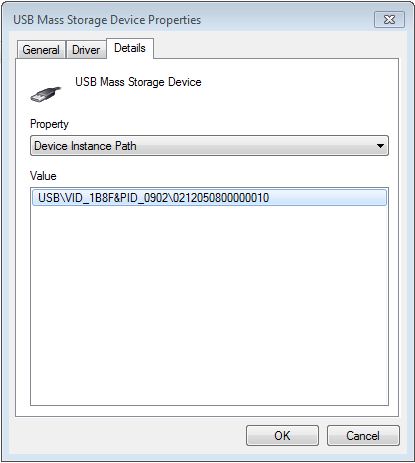
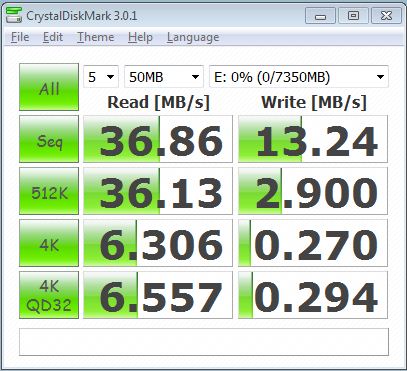
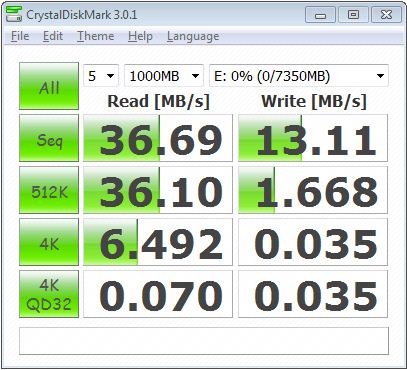
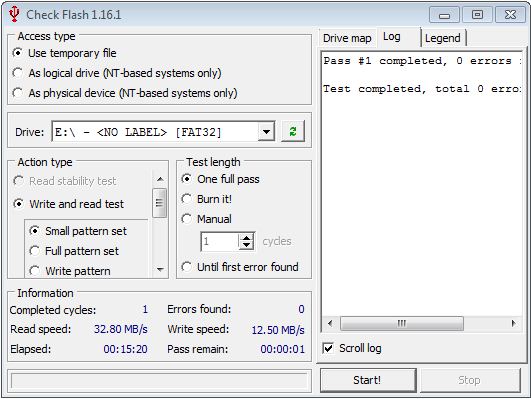
OEM Alcor AU6989
- Unidentified Flash, Alcor AU6989 Controller
- 8GB USB 2.0 tested > 7.48GB of usable memory
- Read Speed: 15.35MB/s, Write Speed: 3.568MB/s
- Controller VID 058F and PID 6387
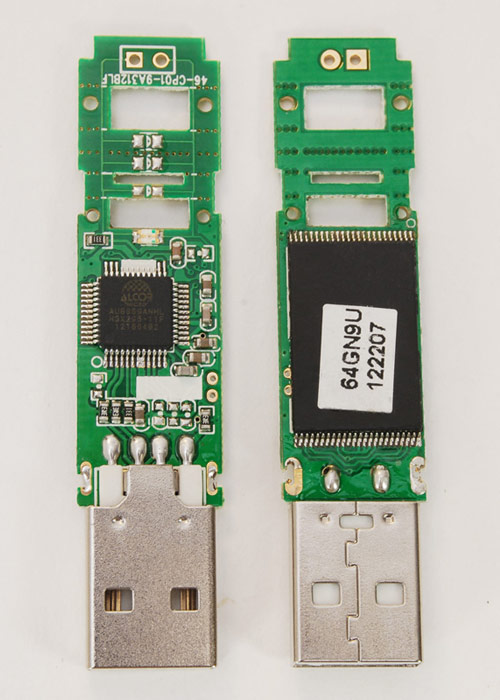
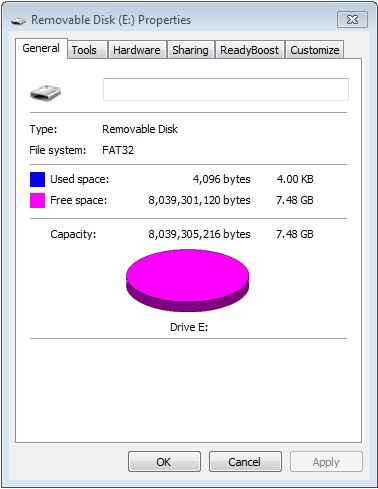
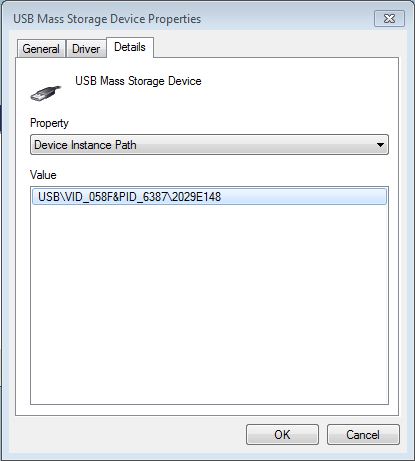
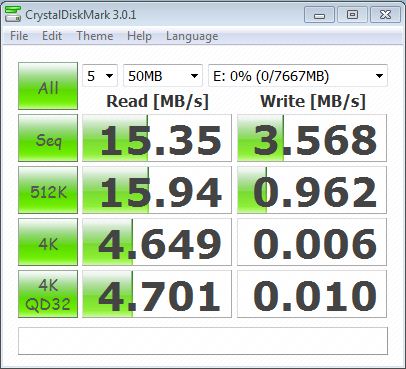
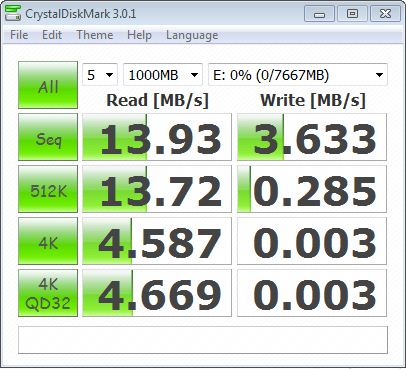
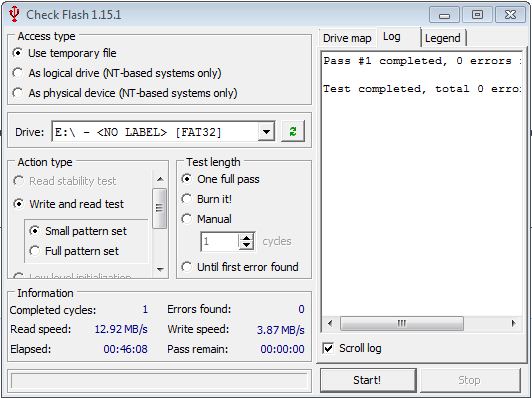
OEM Chipsbank CBM2096
- Unidentified Flash, Chipsbank CBM2096 Controller
- 2GB USB 2.0 tested > 1.87GB of usable memory
- Read Speed: 13.96MB/s, Write Speed: 5.098MB/s
- Controller VID 1E3D and PID 2096
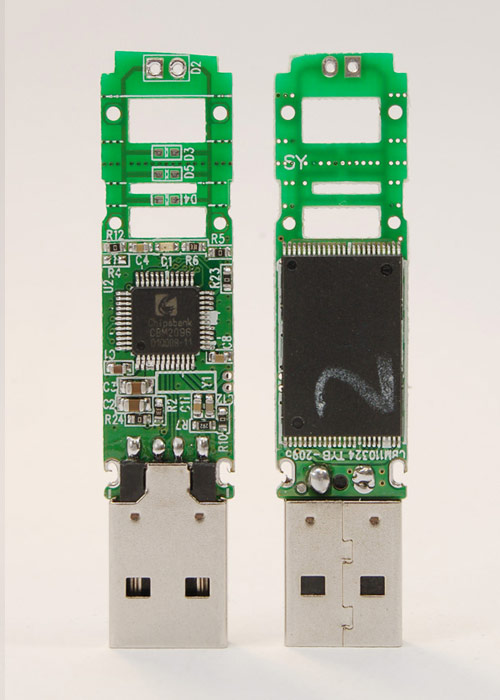
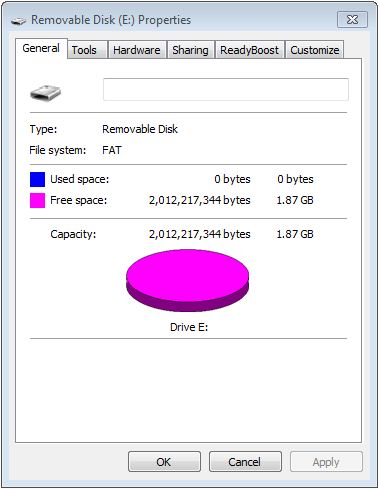
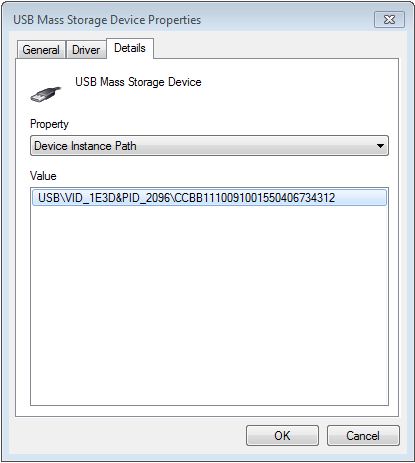
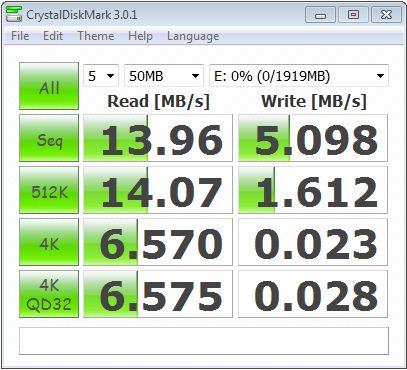
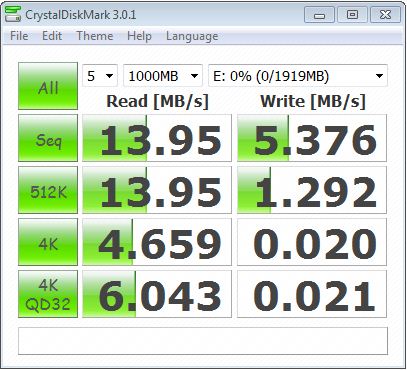
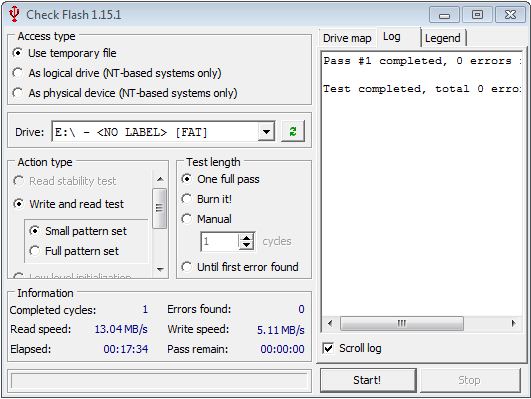
OEM Unidentified “Blob”
- Unidentified Flash, Unidentified Controller
- 2GB USB 2.0 tested > 1.86GB of usable memory
- Read Speed: 17.20MB/s, Write Speed: 6.219MB/s
- Controller VID 058F and PID 6387 (according to research this USB drive uses a Chipsbank CBM2096 controller)
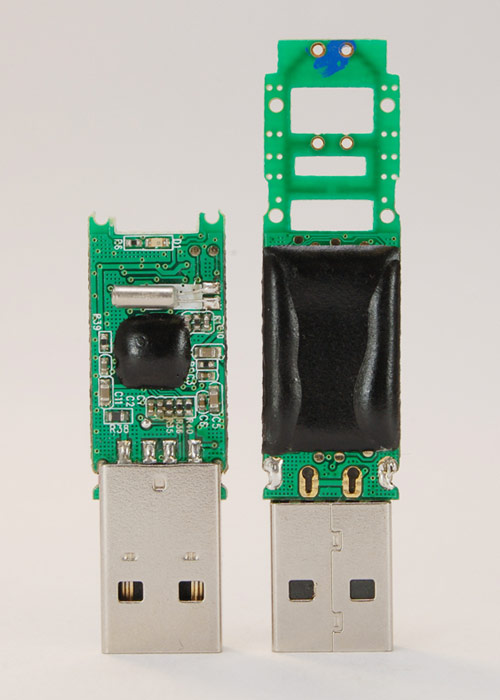
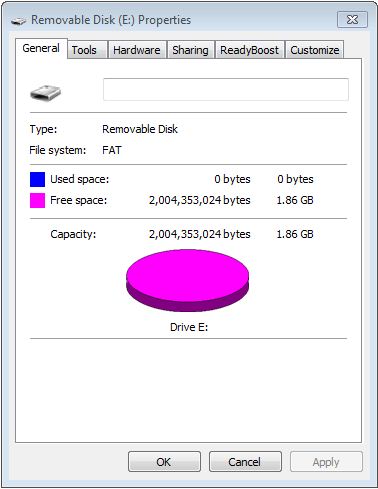
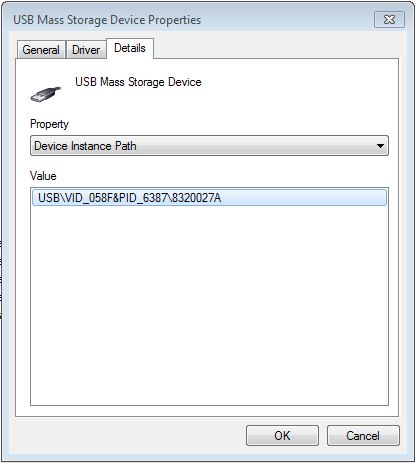
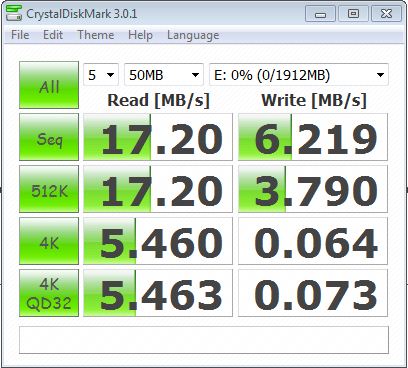
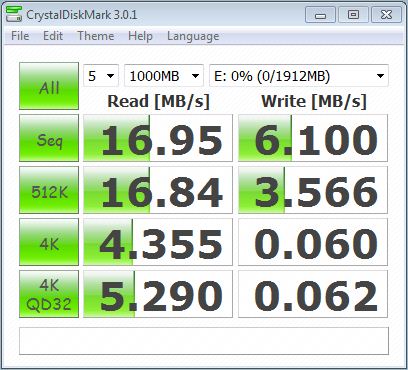
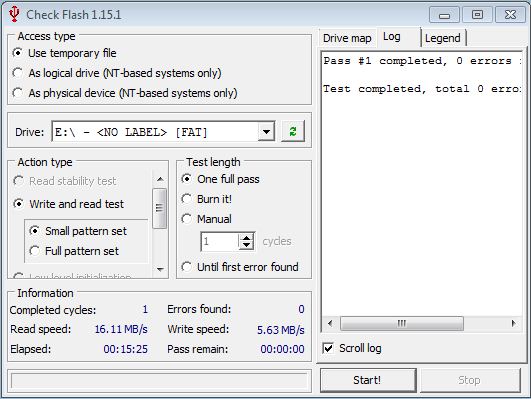
As we said earlier, this will be an ongoing project so keep checking this page for updated reports. If you have anything to add or have any questions, put them in the comments or email sales@customusb.com.
7 Comments
Join the discussion and tell us your opinion.
There is very little technical information about USB flash controllers and NAND flashes over the Net. Thanks for your post. I’ve found this after a lot of searching on google!………..
Can you please tell me what are the development tools that is required to build a USB flash drive from scratch. eg.- how to program the ALCOR flash controller , how to test the flash memory chip etc.
In order to program the controller you need an MP tool supplied by the controller manufacturer. Can you tell us what you are trying to do so we can assist?
It’s just for my final year project on smart card reader.
So unlike the microcontrollers I don’t need any coding in C/assembly here,right? Just change of some settings through MP tools will be enough? I’ve some experience of using AVR microcontrollers but I’m totally new to these specialized controllers. And no documentation on how to use these on the manufacturer sites has made this even more difficult for the hobbyists.
A post/tutorial on the development cycle of a USB flash drive would be very helpful.
Thanks………
I work between a large lapotp and a netbook so I needed something light & mobile to store my data and this was the perfect solution. I had no problems with my order or delivery in fact I got this sooner than expected. Great product reliable seller!
Nice post. I used to be checking constantly this weblog and I am impressed! Extremely helpful information particularly the ultimate part 🙂 I deal with such information a lot. I used to be looking for this particular information for a long time. Thanks and good luck.
“The smallest capacity currently produced by the NAND Flash Manufacturers (listed above) is 8GB. All smaller capacities that you see on the market are made using downgraded Flash.”
Lower end capacity nand chips are still being produced, it might be for other electronics other than USB drive , mobile phones, cameras etc that needs a onboard memory storage for various purposes. Its wrong to suggest all Nand chips under 8GB are dodgy chips.
The PNY is technically a card reader chipset, its not a usb controller, card reader chpsets suck up a lot of power , plug 2 or more of these onto one comp , you end up with BSOD.
Thanks for the info about the PNY drive. We will look into this.
Regarding low capacity drives, we were not suggesting that they are dodgy chips. Instead, we were describing how they are produced. Downgraded flash can still be high quality, it depends on the source of the original chip and your QC process.
You are correct, smaller NAND flash capacities are still produced, but only for embedded applications. As far as USB drives go, the smallest mass produced capacity is 8GB.